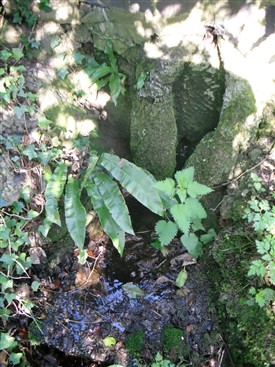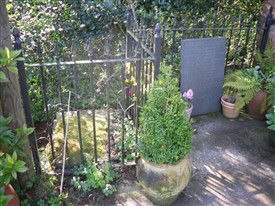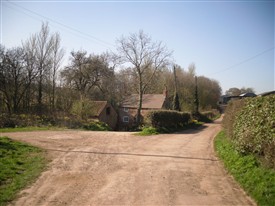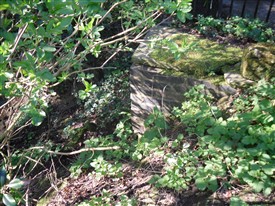St. Catherine's Well, Southwell

Close up of the well

The well with plaque

Bath cottage

The well house seen from the bank
By R B Parish
The small hamlet on the edge of Southwell has the remains of St. Catherine Well. This is found down Bath Lane which remembers the fact that it site was once developed as a minor spa. It is found between Bath Cottage and the barn arising in a brick-lined square structure capped with a broken slab. This sits on an older structure which has the appearance of calcareous rock; although any petrifying properties are not noted by previous authors. When first visited the well house was dry, however, a more recent visit in spring showed a considerable flow (despite a dry winter). It flowed from a clay pipe within the well house and leaves through a smaller pipe set into the calcified part and then down to the dumble below. In this dumble appear to be some dressed stone which may have been part of the original structure. Beside the well on the bank above is a small slate monument which records:
“A chapel dedicated to St. Catherine existed here in medieval times but it is thought to have fallen into disuse at the dissolution. A spring and well with reputed healing properties near the chapel was still patronised in the 1800s by those seeking relief from rheumatism. The present bath cottage was erected on the site of the chapel. D.J Hall Southwell .”
Despite this statement one cannot be 100 percentage certain that the site has an ancient origin. Although, the earliest record of a religious institution here is in 1482 when a chapel was erected dedicated to the saint, we cannot be sure whether this was built to cater for those who sought the well is unclear. However it is likely. Unfortunately, it appears to missing from early maps and only appears in the 18th century when it appears to have developed as a possible spa. At this time its waters were said to be a cure for rheumatism being particularly cold. Dickinson (1819) notes that a Mr. Burton of Norwood Park built a house and bath at the site in 1720. He appears to have used the saint as support for its properties as:
“Over the head of the fountain was a plate, on which some Latin verses were inscribed, much to the honour of the tutelary saint, and the reputation of the water.”
It is thought that the cottage and barn at the site may be the remains of this venture, although, I was informed by the occupant that the barn had mediaeval features. Morrell in Nottingham Holy wells (1988) recalls when he visited that he was told that a bath-like structure with steps down was located nearby, but an exact location was unknown, and the current occupiers were similarly unaware of it when I visited. This was probably a relic of its Burton’s exploitation. This appears to have been a brief period, for as Shilton (1818) notes:
“...would have retained them to this day, had there been the due accompanyments (sic) for luxurious lounge, intrigue and scandal commodiously attached.”
Apparently a spa with these facilities never developed and the well slipped back into relative obscurity. Whatever its origin the site is a delightful one to encounter on a bright spring morning. Please note the well lies on private property, ask permission to view.
References
Dickinson, W., (1787) A History of the Antiquities of the Town and Church of Southwell, in the County of Nottingham. Nottingham
Morrell, R. W., (1988) Nottinghamshire Holy Wellsand Springs Nottingham
Shilton, R. P., (1818) The History of Southwell in the county of Nottinghamshire. Nottingham
Extracted from the book R.B. Parish Holy wells and healing springs of Nottinghamshire.